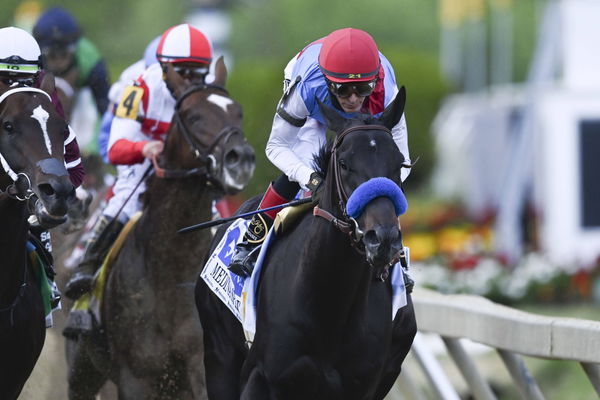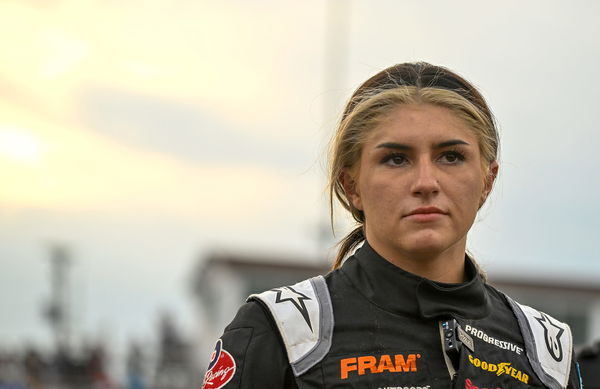Following Multiple Fatalities, American Horse Racing Association Enforces Crucial Rules

Follow Us

Recent tragedies on the track have rocked the world of American horse racing. A series of catastrophic injuries leading to equine fatalities at several major racetracks has cast a harsh spotlight on the sport’s safety record and regulation. In response, the American Association of Equine Practitioners (AAEP) hosted a pivotal meeting of veterinary experts last month to address the crisis. The urgent forum explored ways to bolster racehorse safety by examining injury trends and tapping new technologies.
The AAEP’s inaugural Forum on Thoroughbred Safety and Injury Prevention aimed to find answers. Held at the organization’s headquarters in Lexington, Kentucky, from September 29 – 30, 2023, the invitation-only event gathered racetrack vets, surgeons and radiologists. Over the days, participants scrutinized injury data and potential tech tools for identifying at-risk horses. The goal is to develop actionable recommendations to safeguard horses on the track.
Enhanced Screening, Diagnostic Imaging, and Monitoring for Horse Racing
ADVERTISEMENT
Article continues below this ad
Under the new AAEP rules, all horses must undergo a pre-entry screening exam by a private attending veterinarian before entering a race. This provides an additional layer of evaluation to identify horses that may be at heightened risk of injury. Regulatory veterinarians will also conduct expanded post-entry analysis of training and racing records for entered horses. This review can help flag at-risk horses based on factors like long layoffs between races.
The rules also call for adopting biometric wearable sensors on racehorses during training and racing. These can detect gait changes that may indicate increased injury risk. Ideally, these sensors would be used for all high-speed workouts and races. Further veterinary evaluation will be required before a horse is cleared to race if abnormalities are found.
Trending

Hailie Deegan’s Racing Talent Under Fans Scrutiny After Goodyear Betrayal Tarnishes Dale Earnhardt Tribute
May 11, 2024 09:11 PM EDT

Khabib Nurmagomedov Reportedly in Deep Waters as $3.3M Trouble with Russian Feds Sparks Controversy
May 11, 2024 07:10 PM EDT

“Talent Is Unmatched”: Yet To Win, Sha’Carri Richardson Backed Up By Track And Field World As Her Fierce Wins Echo From Past
May 10, 2024 02:00 PM EDT

“Don’t Even Bother”: Fans Brutally Bash NASCAR Over Historic Speedway’s Unwelcome Revamp
May 10, 2024 05:56 PM EDT

$193 Billion Worth Behemoth Sponsoring Michael Jordan’s Drivers Leaves NASCAR Fans Divided
May 10, 2024 04:06 PM EDT
Get instantly notified of the hottest stories via Google! Click on Follow Us and Tap the Blue Star.

Follow Us
The AAEP will support the installation of high-tech PET scan imaging centers at major racetracks nationwide. These advanced diagnostics can identify bone changes that may predispose a horse to catastrophic breakdowns. Financial aid will also help make these imaging options more accessible for horses at all levels of racing.
Ongoing Education and Research
ADVERTISEMENT
Article continues below this ad
Finally, the new guidelines emphasize continued education for trainers, racetrack officials, and vets on best practices for injury prevention. There will also be increased research into racetrack maintenance protocols, training patterns associated with higher risk, and more detailed injury data collection.
AAEP President Dr. Rob Franklin of Fredericksburg, Texas, emphasized collaboration across the industry to fund and implement the new safety initiatives. With these comprehensive new safety initiatives, the AAEP aims to restore confidence in the safety and integrity of horse racing.
ADVERTISEMENT
Article continues below this ad
WATCH THIS STORY: Rodeo Fans Thrilled as Horse Riding Champion Banks $1.5 Million Victory
The rules will take effect immediately at AAEP-affiliated racetracks across the country. With these measures, the AAEP hopes to significantly curb equine fatalities and reinforce horse racing’s commitment to its athletes.
Written by:
Edited by:

Shifa Jahan


